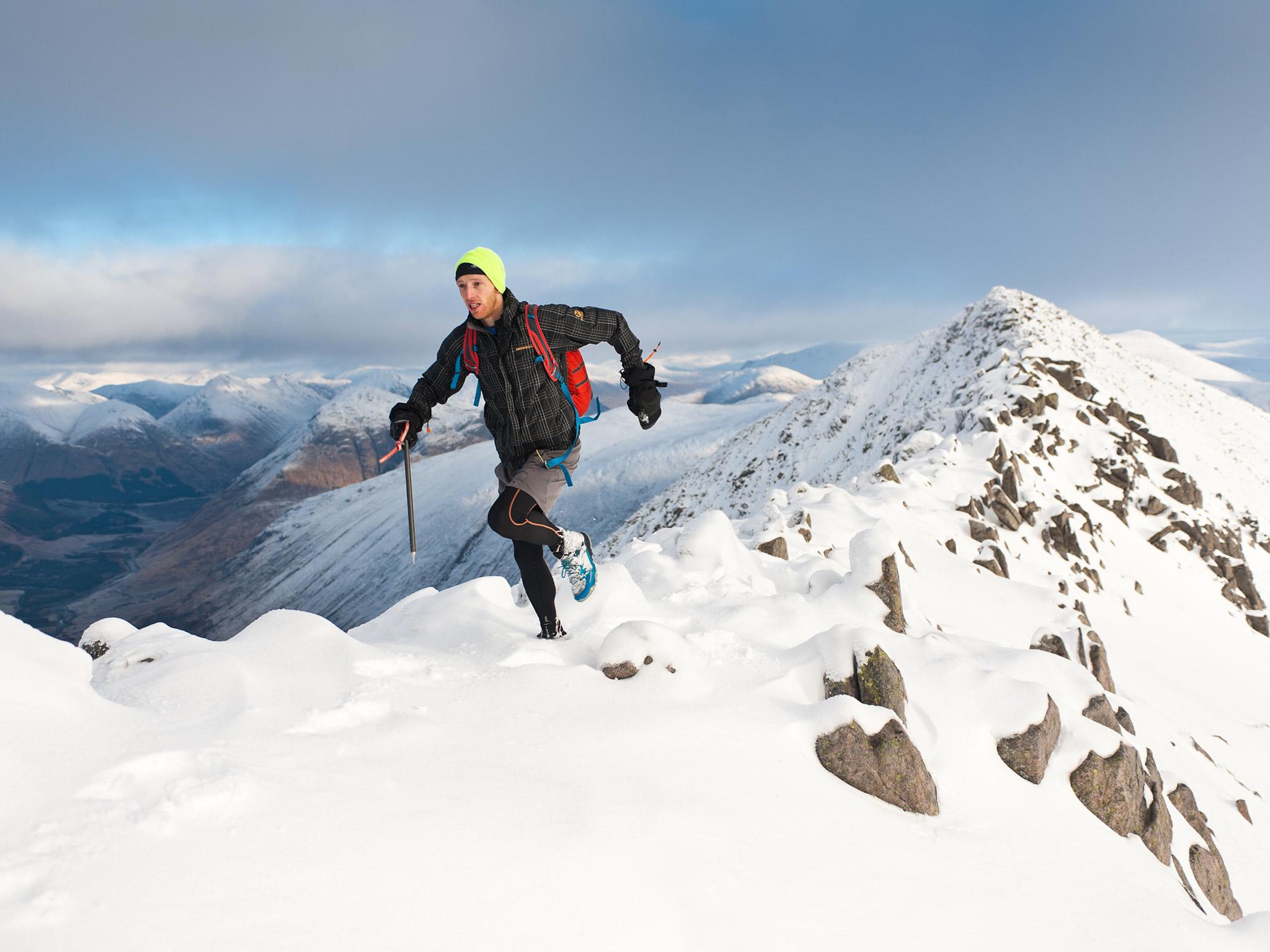Blood, sweat and ice: The scariest experience of an extreme marathon runner
Andrew Murray has run across seven continents and recently won the Genghis Khan Ice Marathon in -36C

Your support helps us to tell the story
From reproductive rights to climate change to Big Tech, The Independent is on the ground when the story is developing. Whether it's investigating the financials of Elon Musk's pro-Trump PAC or producing our latest documentary, 'The A Word', which shines a light on the American women fighting for reproductive rights, we know how important it is to parse out the facts from the messaging.
At such a critical moment in US history, we need reporters on the ground. Your donation allows us to keep sending journalists to speak to both sides of the story.
The Independent is trusted by Americans across the entire political spectrum. And unlike many other quality news outlets, we choose not to lock Americans out of our reporting and analysis with paywalls. We believe quality journalism should be available to everyone, paid for by those who can afford it.
Your support makes all the difference.“I work doing two things,” Andrew Murray (not that one) says casually: “as a sports consultant, and as a runner.”
But the 36-year-old trained GP from Edinburgh is anything but your average reluctantly jogger who nips round the park three times a week. Just last month, he not only competed in but once again came first in the Genghis Khan Ice Marathon: a gruelling race across the arctic plains of Mongolia in -36*C.
Compared to his other feats, the ice marathon is small fry. In 2012 he ran 4,300km from John O’Groats to the Sahara desert; then ran seven ultra-marathons across the world’s seven continents in under a week. He was also victorious in the North Pole Marathon, the Antarctic Ice Marathon, the 250km Gobi Challenge, and the 230km Indo Jungle Ultra.
“In the Sahara my feet looked like they went through a lawn mower,” he tells The Independent. “If you're running far enough it can be quite unpleasant,” he adds nonchalantly.
“In Canada I ran for 30m on a broken leg,” he adds, recalling how he suffered a crack in the bone in his leg in a rural area when he was running across the world’s continents. “In that circumstance you have little option. It was very so cold if you stop you may be very difficult to keep warm. I could have waited for someone to pick me up but there weren’t many vehicles around. I was on a very icy surface so I was able to slide the leg along in ice and limp.”
Ever the stoic, he adds: “It was pretty sore.”
He experienced his scariest moment, however, during the Genghis Khan Ice Marathon in January 2017, which crosses the Tuul Gol river in Outer Mongolia which freezes in layers. The temperatures was -36*C, but the sun’s rays were beating down hard onto the ice and creating faults on the river’s surface.
“I put my foot though a layer of ice,” says Murray. “I took a step and my ankle disappeared. I made a hasty retreat and skirted around the blue areas where the ice was melting.
If the ice had cracked further and opened up to swallow Murray, he could have frozen to death. But in such extreme, sub-zero temperatures and without any access to warm, dry clothing, even getting his foot wet could have made him prone to trench foot, frostbite- which both heighten the chance of amputation - and even life-threatening hypothermia.
"Luckily I was wearing quality gore tex shoes so the water didn’t get into my foot," says Murray. "That was the worst thing that happened. The best thing was getting to finish and having a massive Burns Night supper wih our Mongolian host.”
Murray adds that the race in rural Mongolia is one of the few where runners see potentially dangerous animals including wolves, huskies and eagles. But Murray was unphased.
“They were unlikely to attack because my feet were stinking,” he says, laughing.
In order to stay motivated during races that push his body to the limit, Murray tricks his mind.
“Often it's about breaking bigger tasks into smaller ones. It seems daunting saying I’m at John O’Groats I need to get to the Sahara. Instead, you say it’s only another 2 hours until the next checkpoint. Sometimes you will say to yourself ‘it’s actually not too bad’ and concentrate on previous experiences.”
Running in stunning also helps somewhat.
“I tend to deliberately run in places that are beautiful and take the world and concentrate on running fast and getting the race done.”
“You hear stories of amazing things that humble you,” he adds. “My friend ran 160 miles in a day around a track and I think that’s amazing. I couldn’t do that, I need to see things.”
Keener to sing the praises of others than himself, he goes on: “I met this guy in Nepal once near Everest base camp in the Himalayas. I just said ‘you have a nice view’ and he pointed to Everest and said ‘I’ve been to the top ten times'. These are normal people who are just going about their days in Nepal and they have been to Everest 10 times and that’s just a normal person. If a British guy does it he seems like the biggest hero,” he says, laughing.
In the future, Murray hopes that he will continue to inspire people to run and take care of their health. His advice for those who want to follow in (at least some) of his footsteps is to choose a race with a stunning route and smile at the finish line.
Join our commenting forum
Join thought-provoking conversations, follow other Independent readers and see their replies
Comments